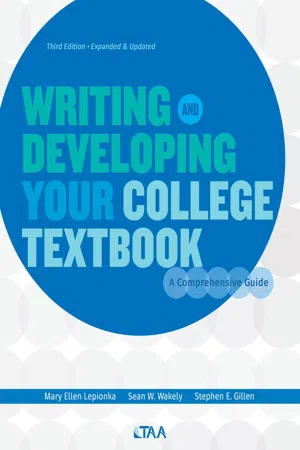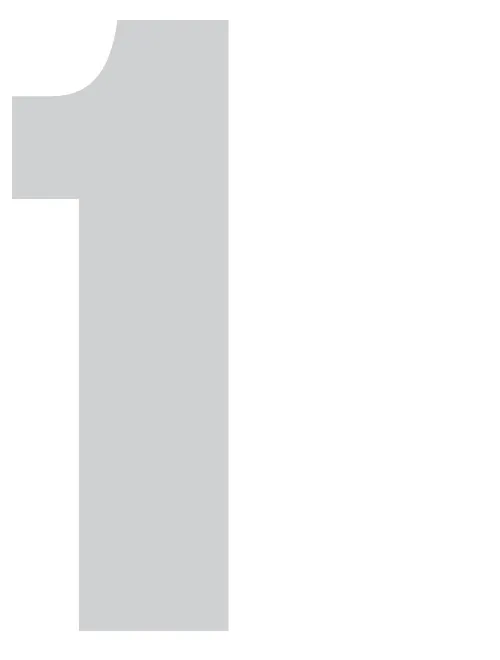![]()
Understanding the Higher Education Textbook Publishing Industry
By Sean W. Wakely
Sean W. Wakely is Founder and Principal Adviser at Academic Author Advisers, a literary agency and consulting service with a primary focus on advising higher education authors and educational technology startups. He began his career as a sales representative for Allyn & Bacon and was a top-performing acquisitions editor and editorial manager at Pearson Education and Houghton Mifflin’s college division. In several senior executive roles at Thomson Learning and Cengage Learning, including president of Wadsworth Publishing and manager of National Geographic Learning, Sean successfully guided editorial, product, marketing, production, and digital media teams to achieve industry-leading growth.
![]()
The Evolving Higher Education Textbook Publishing Industry
Sean W. Wakely
Whatever your background—a fledgling writer seeking your first contract, an experienced author with many books under your belt, an editor or product manager, or an academic with an itch to self publish a textbook—you almost certainly picked up this book to learn more about the nuts and bolts of developing excellent college textbooks and online learning content. But do you understand how textbooks are constructed, produced, and sold through a series of publishing processes? Are you familiar with the extensive, ongoing changes taking place in the higher education publishing industry today? Are you confident navigating the evolving college publishing landscape, and do you clearly understand your place in it as an author, a publisher, or a consumer? We’ll address these questions and more in the first few chapters, before focusing on content development strategies, because it’s helpful first to understand the industry’s basics before imagining yourself in today’s ever-changing publishing picture.
The Publishing Landscape
The higher education publishing ecosystem is complex, but its main components are distributors (college bookstores and online retailers), producers (authors or subject matter experts and publishers), and a customer base comprised of buyers (students) and decision makers (faculty or administrators). If you are a college-level faculty member, you probably are a decision maker—you select textbooks for your classes or participate in textbook selection committees—and certainly you were a buyer when you were a student. You interact with distributors when you order course materials for your students, and you experience firsthand whether and how students acquire and use those materials. However, even with all those experiences under your belt, you still might not appreciate the size and complexity of the textbook publishing business.
Distributors: College Bookstores and Online Retailers
The National Association of College Stores (NACS) is a global, nonprofit trade association representing over four thousand stores and vendors serving colleges, universities, and K-12 schools. According to NACS, U.S. college bookstores generated just over $10 billion in sales revenues from all products they carry—sweatshirts, backpacks, electronics, mugs, textbooks, food items, and so on, in 2014 (National Association of College Stores, Inc. 2015b). About $7 billion of those revenues are typically attributed to textbook sales alone (Bowker 2013, slide 10), but in 2014, Nielsen PubTrack (formerly Bowker Market Research) estimated higher education textbook sales at over $11 billion (Nielsen 2014, slide 10). The actual number is likely to be somewhere between those extremes. Underlying industry sales have been flat or shrinking for several years in spite of consistent price increases, so the discrepancy in Nielsen/Bowker’s estimates between 2013 and 2014 are unlikely due to sales growth. It’s more likely their attempt to factor the most recent entrants, such as Amazon or Chegg, into industry estimates that previously tracked only campus-based sales. For example, in 2015 Amazon began targeting large institutions for a web-based partnership program called Amazon Campus to replace or augment local college stores. In fact, a fall 2015 student survey, Student Watch (funded by the NACS Foundation), found that students either purchased or rented about 50 percent of their course materials through Amazon or Chegg, two of the largest online retailers of used and rental textbooks (National Association of College Stores, Inc. 2015c). Just as with other markets it has entered, Amazon is shaking up textbook sales and rentals and is poised to become the dominant player at some institutions.
Amazon’s interest confirms that college textbook publishing/distribution is a big business. Yet, just a handful of companies provide most of the products sold by campus bookstores and online retailers, trailed by a large number of smaller publishers who specialize in certain subjects or focus on small-enrollment courses. To better understand the industry dynamics, let’s turn first to the larger publishers who produce the bulk of the textbooks used by today’s college students.
Producers: College Publishers
For many years, the top five college publishers based on overall market share have been Pearson Education, Cengage Learning, McGraw-Hill Education, Macmillan Learning, and John Wiley & Sons (Figure 1.1). While precise market shares are difficult to pinpoint, various estimates suggest these five publishers hold 70 to 90 percent of the U.S. college textbook/course materials market (Button 2014; Koch 2013, 4). The college divisions of Pearson, Cengage, and McGraw-Hill head up the short list. Even with considerably smaller annual revenues, Macmillan Learning and Wiley are influential players in course areas they target.
Sources: Pearson PLC 2015, 222; Cengage Learning 2016, slide 10; McGraw-Hill Education 2016, slide 9; Publishers Weekly 2015; John Wiley & Sons, Inc. 2015, 34.
Other important publishers include the college textbook divisions of Elsevier, Jones & Bartlett, Oxford University Press, SAGE, Sinauer Associates, Taylor & Francis Group (CRC Press, Focal Press, Garland Science, M.E. Sharpe, Paradigm Publishers, Psychology Press, and Routledge), Vista Higher Learning, Waveland Press, Wolters-Kluwer (Lippincott Williams & Wilkins), and W. W. Norton. A number of smaller publishers, such as Rowman & Littlefield and the University of California Press, are expanding their lists at the junior, senior, and graduate levels as well. See “A Sampling of College Textbook Publishers and Commercial Publishing Alternatives” at the end of this chapter for a detailed listing of typical publishers’ profiles.
According to sales data gathered by the American Association of Publishers (AAP), the principal trade association representing over two hundred U.S. publishers, higher education publishing activity generated a total of $4.08 billion in revenues in 2015, a decrease of 7.2 percent over 2014 (Shelf Awareness 2016). Not all textbook publishers report results to the AAP, which is partially responsible for the discrepancy between the AAP’s reported annual industry revenues and Nielsen’s $11 billion estimate mentioned above. Much of the gap, however, reflects estimated revenues attributable to online and brick-and-mortar retailers’ used book and book rental activity, from which neither publishers nor authors derive earnings following an initial sale—and they also aren’t reported to the AAP.
Higher education textbook markets are global, but the lion’s share of most authors’ and publishers’ earnings are derived from North American markets or from the original, English-language versions sold by a publishers’ international divisions or third-party distributors. Therefore, this book focuses primarily on products developed for the U.S. higher education market—and the best place to begin a discussion of the industry is with its customers.
Customers: Buyers and Decision Makers
College textbook publishing is not a typical consumer market, because the purchasers—students—do not select the products they use. Instead, administrators or instructors make the initial selections, and students are expected to purchase the assigned materials. While publishers market to various customer channels, most college textbooks are used in either for-profit or nonprofit higher education institutions.
For-profit institutions’ textbook selections or adoptions are generally made by the school’s owners or its administrators, and course materials are usually included in the costs of tuition and student fees. However, for-profit schools only constitute around 10 percent of undergraduate enrollments (U.S. Department of Education, National Center for Education Statistics 2015, Figure 4). Therefore, publishers and authors are more greatly impacted by the decision-making process at nonprofit institutions. At these schools, full-time faculty members or faculty committees usually evaluate and adopt course materials, and students purchase the assigned materials separate from the tuition and fees they pay. Unlike their counterparts at for-profit institutions, students at nonprofits must decide whether to purchase new, used, or rented books, take advantage of digital options, search for substitutes, or forego a textbook purchase altogether. Given all the options available, how do students make such decisions?
Students
The National Center...





